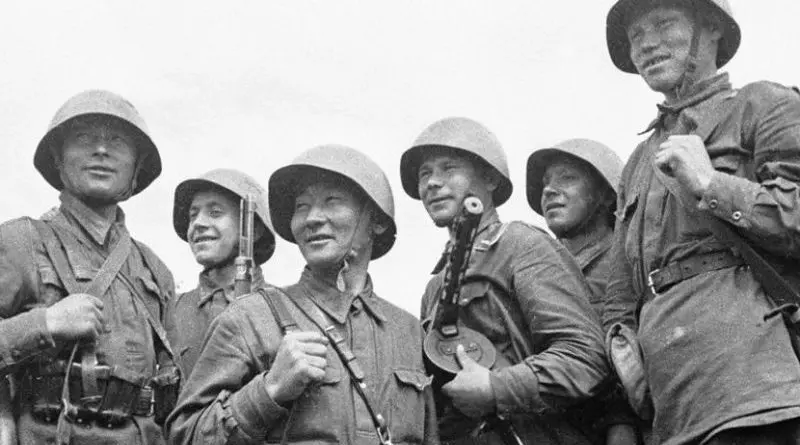Ethnic-Based Units In Soviet Army In World War II Far Less Effective Than Moscow Often Claims – OpEd
By Paul Goble
Because non-Russians form an increasing share of the Russian armed services, ever more of them and of Russians as well are looking back to the times when the Soviet government formed military units along nationality lines, less in the chaotic days of the Civil War than during World War II.
These units in many cases, however, existed more on paper than in reality, historian Aleksandr Brazhnik writes; and consequently, their celebration as possible models for the future should be treated more skeptically than is all too often the case, especially among non-Russians (russian7.ru/post/kak-srazhalis-sovetskie-nacionalny/).
There were nationality-based units in the Soviet military until 1938 when Moscow banned them because of its conviction that advances in military technology made a unitary approach necessary. But three years later, in the wake of the German invasion, the Soviet government changed its mind, and formed 66 national military units, half of whom saw combat.
In November 1941, the Defense Committee of the USSR called for the formation of national cavalry divisions consisting of volunteers from Central Asia, Kalmykia, Bashkiria, the Cossack regions and the North Caucasus. It was planned to establish 19 such divisions, but only six were created: the Tajik, Turkmen, Uzbek, Kalmyk, Bashkir and Kabardino-Balkarian.
There simply weren’t enough men from the others who knew Russian, and some Soviet commanders felt that many of these people lacked military spirit. At the end of 1942, Moscow ended the draft among North Caucasians and the formation of national units from that region was stopped.
Many of the national units were deployed in the rear to guard key installations. One prominent exception was the Kalmyk units which were sent to fight in various fronts. “Part of the national subdivisions existed only on paper.” That is, they were called national units but were filled overwhelmingly by Russians either from the outset or after heavy losses.
According to Brazhnik, “the only subdivision of the Red Army which over the course of the war preserved its ethnic composition was the 88th separate Chinese rifle brigade; But it fought against the Japanese and only in August-September 1945.”
The numerically small peoples of the North and Siberia were not drafted, but some of their volunteers achieved distinction as snipers. But according to the historian, many of them didn’t understand the nature of the ideological struggle between communism and Nazism and thus were less reliable than might otherwise have been the case.

